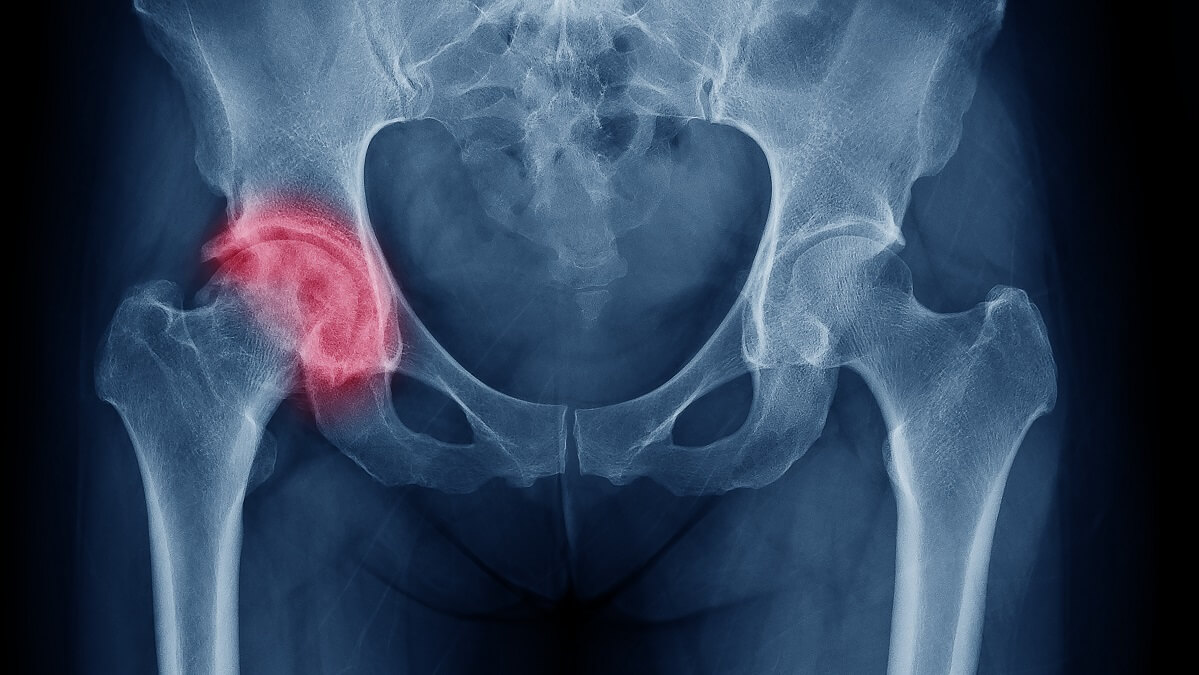Most adults know that bone density decreases as we age. As density falls, the risk of fractures climbs, and for older people, the impact can be devastating – between 20 and 30 per cent of hip fracture patients die within one year of the event.
There are two major factors involved here. One is often beyond the control of the individual. The other, though, is very much something we can address – if we act soon enough.
Given the alarming fatality rate among those who have suffered a hip fracture, reducing the risk of occurrence should be the goal. But experts looking at the other side of the equation – the post-fracture period – have identified another risk factor.
Waiting for surgery
Experts at Hip Fest 2023 highlighted this factor. While it may sound like a mass gathering of uber-cool people, Hip Fest is in fact a meeting of health experts whose focus is the hip. It is hosted by the Australian and New Zealand Hip Fracture Registry (ANZHFR). Between them, ANZHFR experts have identified that many people with a hip fracture wait longer than is optimal for surgery.
Some hospitals have recognised this and made dramatic improvements, but the need for universal improvement is clear. To that end, the Australian Commission on Safety and Quality in Health Care (ACSQHC) has introduced an updated national clinical care standard for hip fracture.
Launched at Hip Fest, the new standard introduces changes in a number of areas of hip fracture care. The standard recognises ‘time to surgery’ as critical to survival after hip surgery. The updated standard has reduced the maximum time to surgery from 48 hours to 36 hours. This puts Australian and New Zealand standards in line with international guidelines.
Geriatrician Professor Jacqueline Close, co-chair of the ANZHFR, explains the drivers of the change in the standard.
“The adage ‘don’t let the sun set twice before hip fracture repair’ has merit for several reasons,” she says. “First, no-one wants to see their mum or dad fasting and in pain waiting for surgery; and shorter time to surgery is associated with fewer complications, better recovery and survival.”
The standard sets expectations for how every patient should be cared for, while allowing for treatment to be tailored to the individual, Prof. Close says.
The other side of the equation
The new standard is a significant step, but what can we as individuals do to improve things? You probably won’t be surprised to learn that nutrition and exercise play a big part. The nutrition element becomes clearer by adding one word to the phrase, ‘bone density’. It is in fact bone mineral density that is the key here.
A newly published study indicates that even a small increase in bone mineral density can make a huge difference. The study compared two large cohorts, one of which had a 3 per cent higher bone mineral density. The evidence suggests that 3 per cent increase translates to a 45 per cent reduction in the risk of hip fracture.
Calcium is the star mineral when it comes to bone density and 50 per cent of Australians fall short of the daily recommended calcium level.
Food for thought – and for bones
There’s no shortage of foods that can help you reach that recommended level (1000-1300mg daily). Dairy foods – milk, cheese, yoghurt – are an excellent source, but by no means the only source. All of the following can help you achieve your calcium target:
- trout, snapper, mussels, oysters, prawns, canned sardines and salmon
- cucumber, kale, silverbeet, Chinese cabbage, broccoli, rocket, watercress, bok choy and leeks
- almonds, Brazil nuts, hazelnuts, walnuts, sesame seeds and tahini paste
- orange, strawberries, figs, kiwi fruit and dates
- eggs, calcium-set tofu, canned chickpeas and soybeans
- pork chop and chicken.
Australian health authorities have taken important steps towards improved care for hip fracture patients. Reducing our chances of needing such care is very much up to us.
Have you had a hip fracture requiring surgery? How long did you have to wait for the surgery? Let us know in the comments section below.
Also read: New tool to measure bone age may save lives
Disclaimer: This article contains general information about health issues and is not advice. For health advice, consult your medical practitioner.


The article doesn’t appear to explain why any hip fractures and surgeries lead to death in the first place. Just suggests ways of preventing it. It’s not obvious why it should be the case.